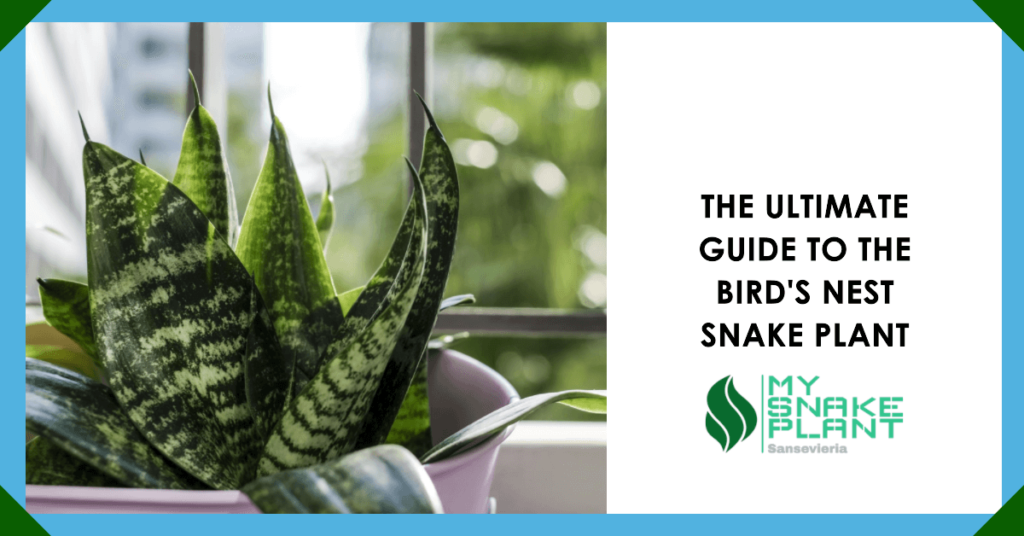For a long time, plants have been a fine addition to many homes. It has been so particularly for the plants people don’t get to see outside their houses, which means, are not native to those lands. One such plant is been snake plant and its many varieties. One of the said variants, called The Bird’s Nest Snake Plant, also scientifically known as Dracaena trifasciata, is a remarkable plant native to tropical West Africa. It’s not just its aesthetic appeal that makes it a favorite among plant enthusiasts, but also its resilience and minimal care requirements. It feels like, by bringing this plant into your home, you are bringing in a part of Africa. In this article, we will be talking about the Bird’s nest snake plant, its backgrounds, features, and many more.
Historical Background
Dracaena trifasciata or hahnii snake plant has been a part of human history for quite some time. Previously known under the synonym Sansevieria trifasciata, this plant has been associated with various cultures and traditions. In different cultures, it has been known or used for different things, some of which are:
Bow: Snake plants have been a source of a strong plant fiber called bowstring hemp which has been used in the process of creating bowstrings. Although snake plants are now the only source of material for bowstring hemp, it shows the significance and importance of this plant.
Symbol: Traditionally, snake plants have been used to symbolize peace and tranquility. It’s quite ironic taking into account their significance as a source of material for bowstrings. In some other cultures, it has been associated with luck and positive energy.
Medicine: Snake plants have been used for their curative properties as well. One of its many uses has been in wound healing. Not limited to wound healing, it has also been used as a coagulant, for curing fevers, for dysentery, and as a cure for diarrhea.
So, in the process of shooting someone with a bow, snake plants were used to create the bowstring, then put one at your front door so the other guy stops from shooting more arrows, and to coat the wound caused by the arrow.
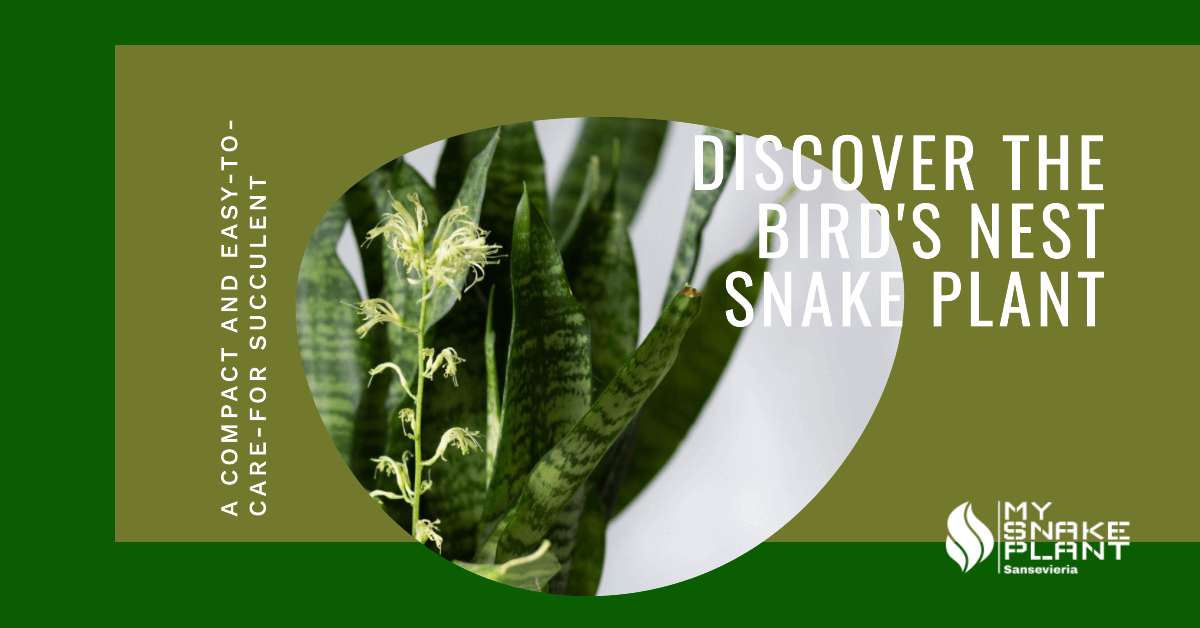
The Discovery of Sansevieria ‘Hahnii’ – Bird’s Nest Snake Plant
The first dwarf cultivar of its kind, Sansevieria ‘Hahnii’ was discovered in New Orleans at the Crescent Nursery Company. This discovery was made by W. W. Smith Jr., and the plant was patented as an “improved variety” of Sansevieria. This dwarf variant grows like a rosette, with leaves emerging from the stem tip and extending to the underground stem or rhizome. It even managed to win some rewards back in its time of discovery.
Scientific Classification
Delving into its scientific classification, the Bird’s Nest Snake Plant is a flowering plant, It belongs to the Asparagaceae family, native to Tropical West Africa. Its genus is Dracaena, and the species is D. trifasciata.
Description and Features
This evergreen perennial plant, The Bird’s Nest “Hahnii” snake plant, forms dense strands, spreading through its creeping rhizome. Its stiff leaves grow vertically from a basal rosette, with mature leaves showcasing a dark green hue with light gray-green cross-banding. These leaves can range from 70-90 centimeters long and 5-6 centimeters wide. In optimal conditions, the plant can even reach heights above 2 meters.
Growth and Maintenance
One of the reasons for its popularity as a houseplant is its non-demanding maintenance. As we said before, the snake plant is native to West Africa, where the soil isn’t very rich and it has to be able to stand ward climates. The Bird’s Nest Snake Plant requires minimal water and sunlight, making it perfect for indoor settings, especially in dark rooms or apartments. It can also be used as an outdoor plant in warmer climates, making it suitable for almost any place.
Unique Characteristics
The plant has a unique mechanism for exchanging oxygen and carbon dioxide, known as the crassulacean acid metabolism process. This allows it to withstand drought conditions. Interestingly, the microscopic pores on its leaves, called stomata, open only at night to prevent water loss during the day. It also allows it to require watering far less frequently than most other plants, making it suitable for those of us who might forget or are too busy to water the plant on time.
Common Names and Significance
Commonly referred to as the “mother-in-law’s tongue”, “Saint George’s sword”, or “snake plant”, its leaves’ shape and sharp margins resemble snakes. The first name is rather obvious and has been given to it; you know what they say about mothers-in-law. Saint George’s sword apparently has its roots in Brazil, but one can never be too sure. Another intriguing name is the “viper’s bowstring hemp”, hinting at its use as a source for plant fibers to make bowstrings.
Cultivation and Uses
Apart from its ornamental appeal, we said that it used to be used for making bowstrings, thanks to its strong natural fibers. It also had medicinal properties. Today, although it is mainly grown as a decorative plant it can be placed outside as a decoration in warmer climates or places indoors in colder climates. Its tolerance to low light and irregular watering makes it a favorite among beginners in plant cultivation. It can thrive even in almost dark places and needs watering rarely, as few times as once a month in colder climates or seasons.
Varieties and Cultivars
There are numerous cultivars of the Bird’s Nest Snake Plant, many of which are chosen for their variegated foliage. There are over 70 species of snake plants around the world, 21 of which are considered a good option to grow in indoor settings. Some popular cultivars include ‘Compacta’, ‘Goldiana‘, ‘Hahnii‘, ‘Laurentii‘, ‘Silbersee‘, and ‘Silver Hahnii‘.
Cultural Significance
Snake plants are native to West Africa; you can find most of their cultural significance there. In Africa, a yellow-tipped cultivar is considered by the natives to be associated with Oya, the female Orisha of storms. In Nigeria, people believe it to be linked with Ogun, the Orisha of war. In Brazil, its name, Espada de São Jorge, connects it to Saint George; that’s why we said it’s related to Brazil.
Potential Risks and Precautions
While it’s a favorite among many, it’s essential to note that the plant contains certain chemicals, which can be mildly toxic to pets like dogs and cats. This chemical is known as saponins and has medicinal uses such as anti-inflammation effects when consumed by humans. However, it has the opposite effects on animals; If consumed, it can lead to gastrointestinal issues.
Flowering & Fragrance
While primarily grown for its foliage, the Bird’s Nest Snake Plant occasionally produces a stalk of small, inconspicuous yet fragrant flowers when it’s overcrowded or stressed. These flowers can be greenish-white, tan, or yellow.
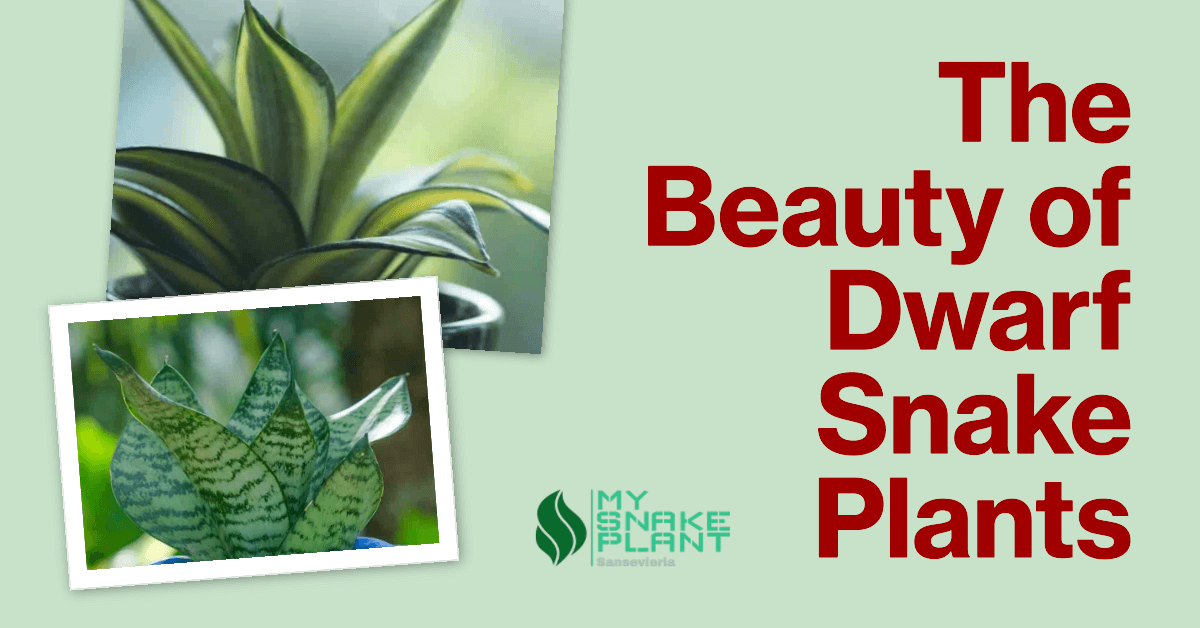
Dwarf Snake Plant Conditions & Temperature
Sansevieria thrives in low light but performs best in bright light to full shade. It’s a resilient plant that can withstand challenging conditions, including inconsistent temperatures.
Water Needs & Feeding
Water the plant thoroughly from the base when the soil dries out. If you water the plant too much, there is a good chance it leads to root rot, so take care to ensure proper drainage. While fertilizing isn’t mandatory, an all-purpose liquid houseplant food can be applied once in spring and once in mid-summer. It’s imperative to know all you need to know so you have the best bird’s nest snake plant care.
Soil & Transplanting
The Bird’s Nest Snake Plant isn’t picky about soil conditions. A mix of standard cactus or succulent soil combined with regular potting soil works best. Repotting isn’t frequent, with many gardeners allowing the plant to become pot-bound.
Grooming & Maintenance
Over time, the plant’s leaves may accumulate dust. Wiping them with a damp paper towel can restore their shine. It’s also essential to trim weakened or dead leaves to maintain the plant’s appearance.
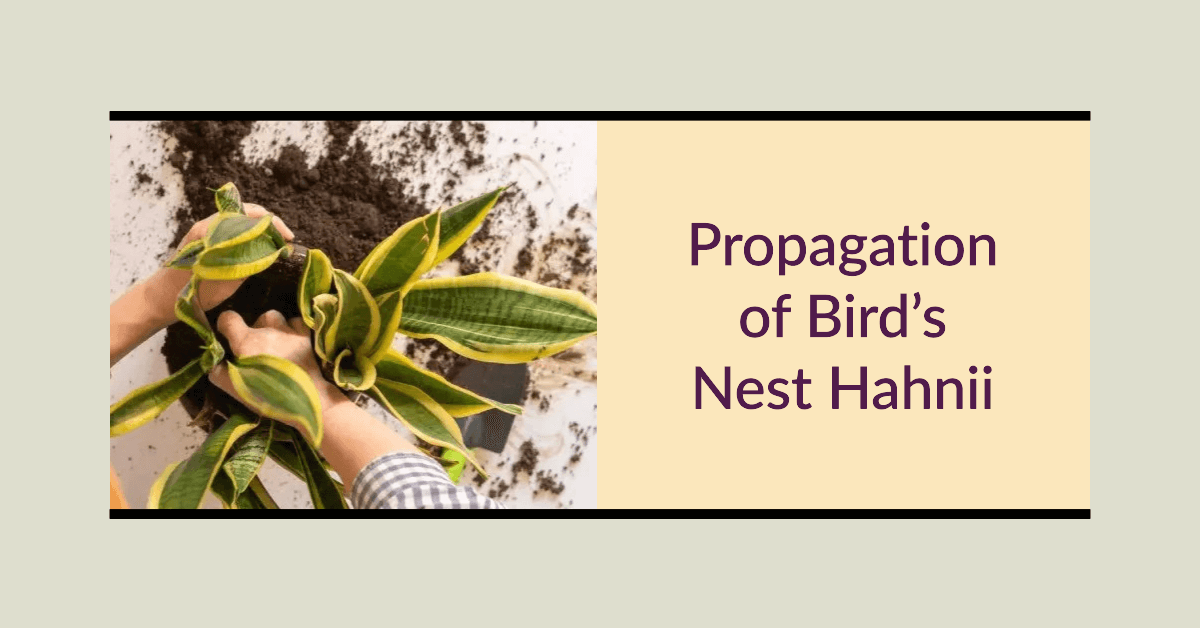
Propagation of Bird’s Nest Hahnii
Propagation is straightforward. The plant spreads through rhizomes, either on the soil surface or just beneath it. Leaf cuttings can be taken and planted in soil to grow new plants.
Bird’s Nest ‘Hahnii’ Pest or Disease Problems
Generally, the Bird’s Nest Snake Plant is trouble-free. However, plants kept in suboptimal conditions might attract pests like spider mites, aphids, and mealybugs.
Toxicity Concerns
All parts of the Sansevieria plant are toxic. It is without a doubt very important to keep it somewhere where pets or children cannot reach it. It can cause nausea, diarrhea, and some other problems. Interestingly, a wild African species of Sansevieria is a favorite food for elephants.
- Nausea or Vomiting: When ingested by pets, particularly cats and dogs, saponins cause inflammation in the gastrointestinal tract.
- Diarrhea: When a poisonous compound enters the body through the digestive system, the body tries to get rid of it by vomiting.
- Swollen Skin: Sansevieria can irritate skin quite easily. This is particularly true for cats but it can affect dogs or humans just as well. If your pet has eaten Sansevieria, the skin around the mouth should be swollen and easily noticeable.
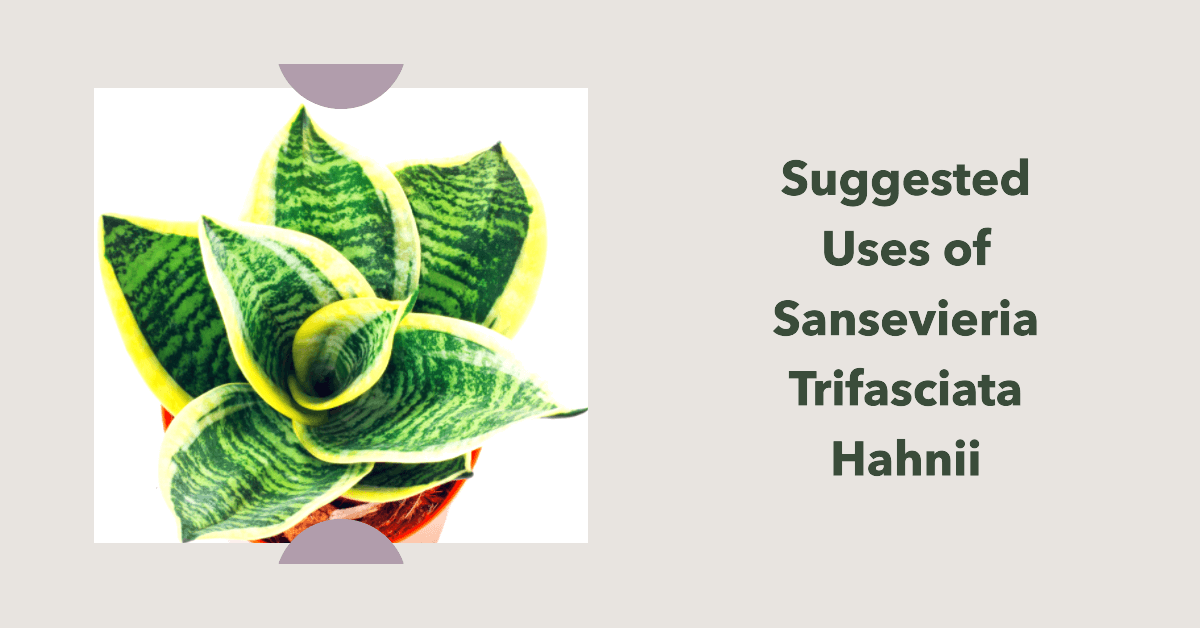
Suggested Uses of Sansevieria Trifasciata Hahnii
This plant is an excellent choice for various settings, including bathrooms, kitchens, desks, and terrariums. Its resilience makes it suitable for xeriscaping, especially in areas prone to drought.
Snake Plants Air Cleaning Claims
Many believe that Sansevierias are among the best houseplants for purifying indoor air. However, it’s the combination of the soil in the plant’s pots, activated charcoal, and proper ventilation that positively affects indoor air quality. It’s not only good for cleaning the air though as it:
- Filter Indoor Air: I know I’m not a professional in this topic, but don’t all plants filter air by producing oxygen? It seems that Sansevieria is one the best options out there and in your reach in this case; that is, it produces more oxygen than almost all other houseplants; or at least, that’s what Harvard University says in their newest research.
- Beauty: We can argue about the beauty of this plant because there are no accepted beauty standards; however, numbers have proven that the majority of people who ever had Sansevieria considered it to be a more beautiful plant in comparison to the other options in their reach. There is no doubt in mind about one thing: it has a very unique appearance.
- Even More Filtering Indoor Air: I have already mentioned that it filters indoor air, but that was mainly centered around how Sansevieria can help you with reducing CO2 level and increasing that of oxygen. Other than that, chemicals such as formaldehyde, benzene, toluene, and xylene are some of the pollutants Sansevieria can absorb. The increased amount of any of them in the air means less oxygen, which can cause dizziness and nausea.
- Nightshift: You might have guessed already that plants cannot photosynthesize in the absence of sunlight when it’s night, which means they cannot produce oxygen. However, Sansevieria is different as it has the ability to perform a certain type of photosynthesis called Crassulacean Acid Metabolism, which causes the plant to absorb CO2 even at night, making it an excellent houseplant.
- Allergies: Researchers at the University of Hawaii have proven that Sansevieria can be helpful in the case of allergies, causing less severe symptoms or stopping it entirely in some cases.
- Feng Shui: In feng shui, it is believed that pointy objects, such as our little friend here, are good against negative chi. It’s best they are placed in the southeastern, southern, or eastern corners of your place.
- Cheap: This is perhaps the most important benefit if we can call it that, of the Sansevieria plant: it is cheap to keep. It’s because it can live on its own and continue to grow even while being neglected, that is, being without water, sunlight, etc.
Conclusion Bird’s Nest Snake Plant
The Bird’s Nest Snake Plant is not just a decorative piece but a testament to nature’s adaptability and resilience. It’s a reminder that somewhere else in the world, it had held meanings other than decorative purposes. It is also an excellent air purifier. Whether you’re a seasoned plant enthusiast or a beginner, this plant promises to be a delightful addition to your collection.
FAQs
- Where is the Bird’s Nest Snake Plant native to?
- It’s native to tropical West Africa and West Central Africa.
- Why is it called the “mother-in-law’s tongue”?
- Because of the shape and sharp margins of its leaves that resemble a snake.
- How often should I water the Bird’s Nest Snake Plant?
- It requires minimal watering, especially during winter. Overwatering can cause it to rot. Depending on the variation of the plant, the soil you are using, and the temperature, it may require watering once every fortnight or once a month during the colder seasons.
- Is it safe for pets?
- It contains saponins, which can be mildly toxic to pets like dogs and cats.
- What are some popular cultivars of this plant?
- Some popular ones include ‘Compacta’, ‘Goldiana‘, ‘Hahnii‘, and ‘Laurentii‘.


